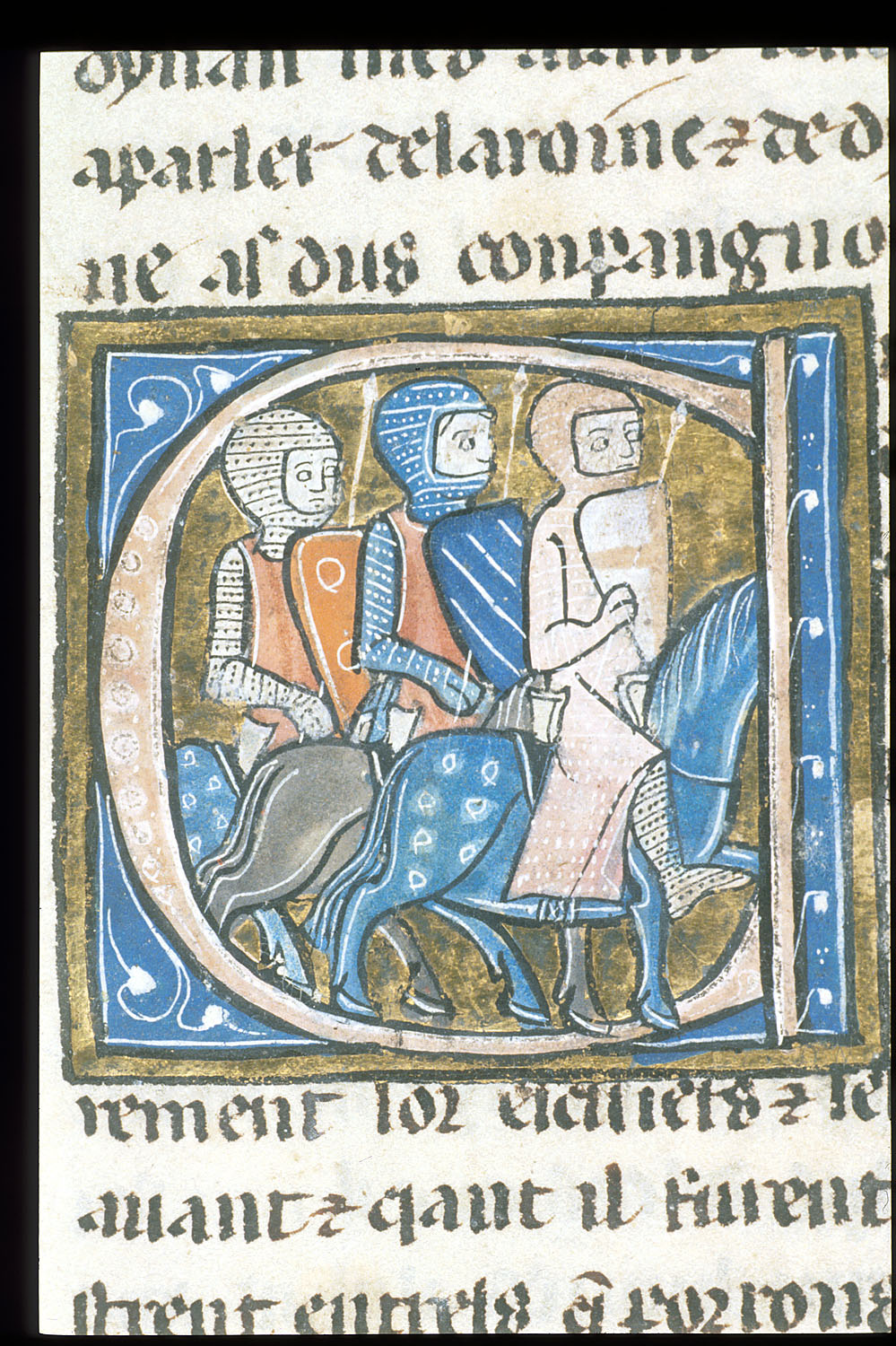Textual tradition
 Since Løseth's analysis of Tristan manuscripts in the Bibliothèque nationale de France (1891), scholars have generally accepted the existence of two principal versions of the Tristan. The first, here labelled 'V.I.', tends to be characterized as shorter, omitting, for example, the Saxon invasion of Cornwall and a string of adventures borrowed from the Queste del saint Graal. V.I. nonetheless gives a more detailed account of certain episodes, including the tale of Tristan's double imprisonment at the hands of his uncle, king Marc. In its most complete form V.I. survives only in Paris BnF f.fr. 756-757, a two-volume set that was copied in Italy in the 14th c. Most of the other manuscripts and fragments that preserve parts of V.I. were made in Italy in the late 13th c. or early 14th c. This version was also transmitted, however, by some of the earliest Tristan manuscripts produced in northern France to have come down to us (Paris BnF f.fr. 1628, Salzburg BU M I 376, Florence BR 866), suggesting that it was not a version exclusively 'for export' (Delcorno Branca 2010, 171).
Since Løseth's analysis of Tristan manuscripts in the Bibliothèque nationale de France (1891), scholars have generally accepted the existence of two principal versions of the Tristan. The first, here labelled 'V.I.', tends to be characterized as shorter, omitting, for example, the Saxon invasion of Cornwall and a string of adventures borrowed from the Queste del saint Graal. V.I. nonetheless gives a more detailed account of certain episodes, including the tale of Tristan's double imprisonment at the hands of his uncle, king Marc. In its most complete form V.I. survives only in Paris BnF f.fr. 756-757, a two-volume set that was copied in Italy in the 14th c. Most of the other manuscripts and fragments that preserve parts of V.I. were made in Italy in the late 13th c. or early 14th c. This version was also transmitted, however, by some of the earliest Tristan manuscripts produced in northern France to have come down to us (Paris BnF f.fr. 1628, Salzburg BU M I 376, Florence BR 866), suggesting that it was not a version exclusively 'for export' (Delcorno Branca 2010, 171).
For the first part of the Tristan, there is little to distinguish V.I. from a second version known as 'V.II.'. Differences become more pronounced, however, once we have heard about Tristan's ancestry, his upbringing, and his early adventures in Logres. V.II., for example, tells of the Saxon invasion of Cornwall, gives only a summary of Tristan's double imprisonment, and includes the Queste del saint Graal in its entirety. The only complete copies of V.II. are Paris BnF f.fr. 335-336 (c. 1400), Vienna ÖNB 2537 (c. 1410) and Vienna ÖNB 2539-2540 (1466). V.II. also survives in part, however, in earlier manuscripts, such as London BL Royal 20 D II and Vienna ÖNB 2542, both copied at the turn of the 14th c. in northern France.
For Løseth, V.I. represented a more primitive version of the text than V.II. Since Baumgartner 1975, however, V.I. is no longer thought to be significantly older than V.II, and neither are considered to be the 'original' version. Baumgartner also identified two later 'mixed' versions of the Tristan, which she labelled V.III. and V.IV. Manuscripts preserving V.III. follow V.II. for much of the text, but turn to V.I. for the account of Tristan's imprisonments and interpolate episodes from the Agravain. V.IV., meanwhile, not only interpolates the Agravain episodes, but also weaves the tales of Alixandre l'Orphelin and the Tournoi de Sorelois into the narrative. (For further differences between these four versions, see: Segmentation.)
Most of the V.III. manuscripts listed by Baumgartner are 15th-c. productions, including Paris BnF f.fr. 97, Paris BnF f.fr. 100-101, Paris BnF f.fr. 340, and Paris BnF f.fr. 349, all probably made in Paris. V.III. must have been compiled at an earlier date, however, since Paris BnF f.fr. 772, copied in the Île-de-France in the 1280s, preserves an abbreviated recension of this version. It has become apparent in the course of this project that more manuscripts feature markers of V.III. than previously thought. These include the early manuscripts London BL Add. 5474 and ÖNB 2542, both Picard productions dating to c. 1300 or slightly earlier that include some but not all of the V.III. markers.
The list of known V.IV. manuscripts, copied between the late 14th c. and late 15th c., can also now be extended. Several are linked to the south or south-east of the oïl zone. The V.IV. section of Cologny Bodmer 164, for example, was likely produced in Burgundy, and Paris BnF, f.fr. 99 was copied in the Limousin in 1463.
By the end of the Middle Ages, then, the Tristan had spawned several different versions, largely through abridgement of episodes and the interpolation of texts from various sources. The end of the roman in particular seems to have lent itself to reworking. Unique endings survive in Paris BnF f.fr. 103 (based on the verse texts), Paris BnF f.fr. 758 (which segues into the Mort Artu), and Paris BnF f.fr. 24400 (which aims to give the final word on the collapse of the Arthurian world).
To: Segmentation.